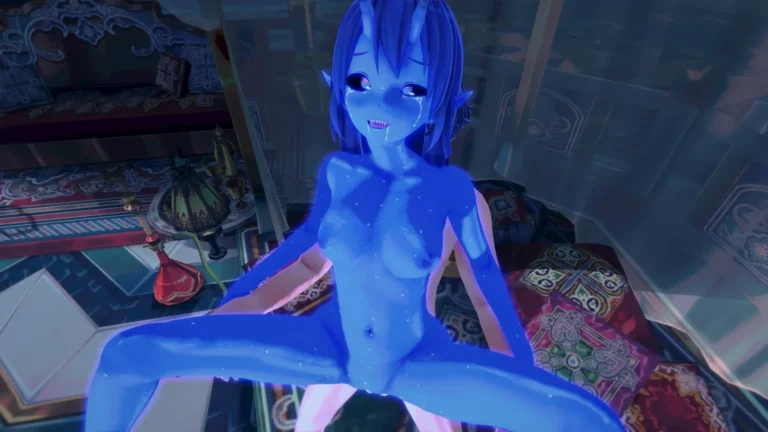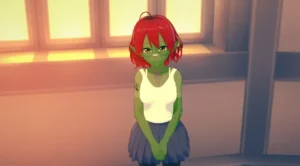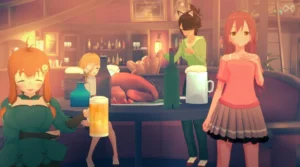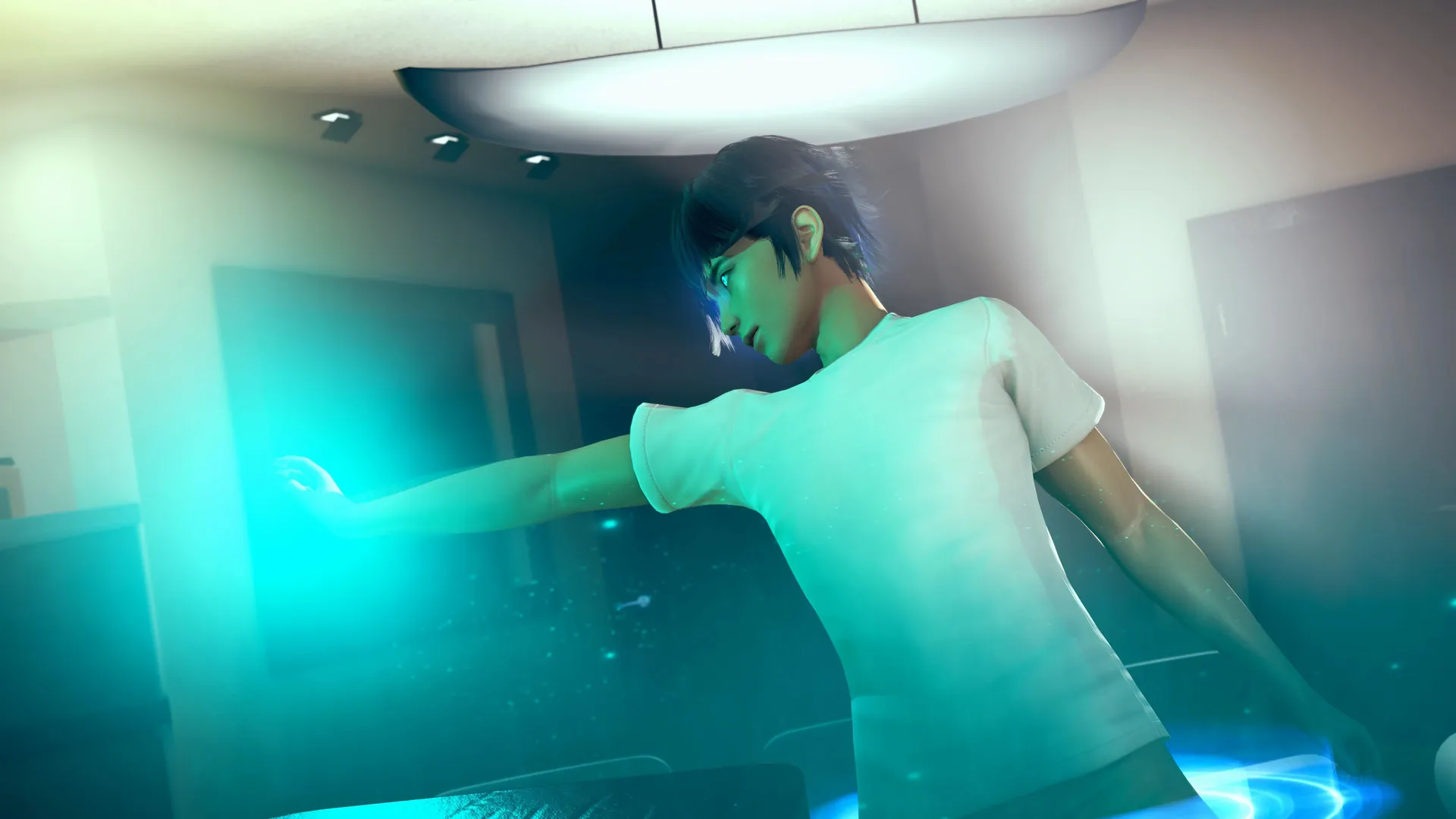
Tales of Unity
Play Tales of Unity
Tales of Unity review
Exploring the narrative and gameplay elements that set Tales of Unity apart
Tales of Unity stands out in the visual novel genre by weaving mature themes seamlessly into a compelling story. Unlike many games that focus solely on explicit content, this title uses its narrative to enhance player engagement and character development. Whether you’re curious about its unique storytelling approach or want to understand the gameplay dynamics, this article offers an in-depth look at what makes Tales of Unity a memorable experience.
The Narrative Depth of Tales of Unity
When I first booted up Tales of Unity, I expected another charming but predictable visual novel experience. What I got instead was a narrative that grabbed me by the collar and refused to let go. 🤯 This isn’t just a game you play; it’s a world you inhabit, and the Tales of Unity story is the beating heart of that world. It’s the kind of experience that stays with you long after you’ve put the controller down, making you rethink what’s possible in a character-driven game.
The magic lies in how every single element—from the dialogue options to the environmental details—serves the central narrative. You’re not just reading a story; you’re living it, and your fingerprints are all over its outcome. Let’s pull back the curtain on what makes this game’s storytelling so profoundly special. ✨
How the Story Drives the Game Experience
The Tales of Unity narrative is the engine room of the entire game. Unlike many titles where the plot feels like a railroad track you’re forced to follow, here the story is the landscape itself. Your journey through it feels personal and earned. The Tales of Unity story doesn’t just unfold in cutscenes; it’s woven into the very fabric of the gameplay.
I remember one playthrough where I was trying to be a pragmatic, “greater good” kind of protagonist. A decision I made in the first act—seemingly minor at the time—rippled through the entire game, closing off an entire story branch in the final chapter that I didn’t even know existed. 😲 That’s the power of its design. The game masterfully uses its visual novel storytelling roots not as a limitation, but as a foundation for incredible player agency.
Pro Tip: Don’t rush through dialogues. The most impactful interactive story choices are often hidden in casual conversations, not just the big, dramatic moments.
The pacing is impeccable. It knows exactly when to build tension with quiet, character-focused scenes and when to unleash a plot twist that re-contextualizes everything you thought you knew. This balance ensures you’re never bored, only increasingly invested. The Tales of Unity story is the true protagonist, and you are its most important collaborator. 🤝
Character Development and Interactions
If the story is the heart, then the Tales of Unity characters are the soul. This is, without a doubt, one of the most compelling casts I’ve encountered in any medium. They aren’t just archetypes or quest dispensers; they feel like real people with complex histories, conflicting desires, and personal growth arcs that are deeply tied to your actions.
Let’s talk about Elara, the cynical strategist you meet early on. On the surface, she’s all sharp edges and sarcasm. But through your interactive story choices, you can choose to peel back those layers. I dedicated one playthrough to earning her trust, and witnessing her slow transformation from a lone wolf into a vulnerable, loyal companion was more rewarding than any loot drop. 🐺❤️ The development of the Tales of Unity characters is the game’s greatest strength.
The relationships between characters are also dynamic. They talk to each other, form opinions, and their relationships evolve based on your decisions. This creates a living, breathing social ecosystem that makes the world feel authentic.
Here’s a quick look at how key relationships can evolve:
| Character Pair | Initial Dynamic | Potential Evolution |
|---|---|---|
| Kaelen & Rhys | Rivalry & Mistrust | Respectful Friendship or Bitter Enmity |
| Elara & Finn | Annoyance & Naivety | Protective Mentorship or Total Estrangement |
| Seraphina & The Council | Dutiful Obedience | Revolutionary Leadership or Exile |
This focus on deep, meaningful interaction is what cements Tales of Unity as a premier character-driven game. You care about these people, and that investment makes every choice feel heavy with consequence.
Integrating Mature Themes Naturally
Many games use mature themes in games as a shock tactic or, worse, as a checkbox on a feature list. Tales of Unity does something far more sophisticated: it bakes these themes directly into its DNA, making them essential to the Tales of Unity narrative. We’re not talking about gratuitous content, but rather a thoughtful exploration of complex issues like trauma, sacrifice, systemic oppression, and the gray areas of morality. 🕯️
The game never lectures you. Instead, it presents situations where there are no easy answers, forcing you to confront these ideas through your decisions. The Tales of Unity story trusts you to grapple with the implications yourself.
Example: A key story moment that highlights character development and mature theme integration
Midway through the game, you discover that a character you’ve grown to trust, Finn, has been hiding a devastating truth: his family is indirectly profiting from the very conflict you’re trying to stop. The game doesn’t present this as a simple “good guy vs. bad guy” reveal.
You are given a choice: expose him publicly to maintain the moral high ground and risk destabilizing your faction’s primary funding, or help him conceal the truth to ensure your army is supplied, thereby becoming complicit in the system you claim to fight. This moment isn’t just about Finn; it’s about your own commitment to your ideals. Do you choose pragmatic survival or ideological purity? This is how mature themes in games should be handled—as integral, difficult dilemmas that define who you and your companions become.
The brilliance of the Tales of Unity narrative is that it explores these heavy topics without ever feeling exploitative or edgy. It’s all in service of telling a richer, more human story. The game has been widely praised for the quality of its writing, proving that a compelling Tales of Unity story can stand tall on its own merits, with the mature content serving as a powerful enhancer rather than a crutch.
Ultimately, Tales of Unity sets a new benchmark for visual novel storytelling. It demonstrates that with sharp writing, believable Tales of Unity characters, and a courageous approach to theme, you can create an interactive narrative that is as profound as it is entertaining. It’s a game that respects your intelligence and rewards your emotional investment, leaving you with not just a memory of a game you played, but a story you lived. 🌟
Tales of Unity offers a refreshing take on the visual novel format by prioritizing story and character depth alongside its mature themes. Its thoughtful integration of narrative and gameplay creates an engaging experience that appeals to players looking for more than just surface-level content. If you appreciate games that reward exploration of character relationships and story-driven choices, Tales of Unity is worth exploring.








